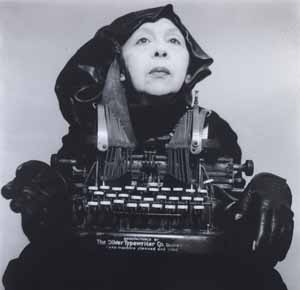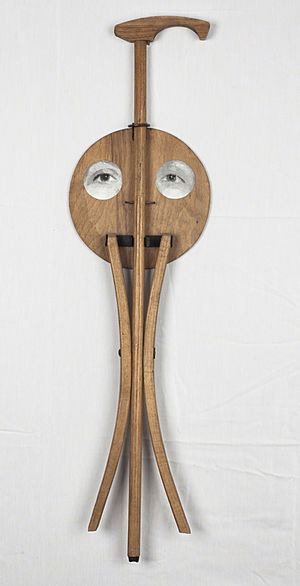Geta Brătescu facts for kids
Geta Brătescu (born May 4, 1926 – died September 19, 2018) was a famous Romanian artist. She created art using many different methods. These included drawing, collage, photography, and even film. She also worked as an illustrator and did performance art.
In 2008, Geta Brătescu received a special award. It was an honorary doctorate from the Bucharest National University of Arts. She got it for her amazing contributions to modern Romanian art. She was also the artistic director for an art and literature magazine called Secolul 21.
Her work was shown in a big exhibition in 1999. This was at the National Museum of Art of Romania. In 2015, she had her first solo art show in the UK at the Tate Liverpool. In 2017, she was chosen to represent Romania at the 57th Venice Biennale. This is a very important international art exhibition.
Contents
About Geta Brătescu
Geta Brătescu studied at the University of Bucharest from 1945 to 1949. She studied literature there. She also went to the Academy of Fine Arts. However, she was not able to finish her art degree. This was because of the rise of the Communist party in Romania. Her parents owned property, so she was seen as having "bad origins."
She later returned to university in 1969. She studied at the "Nicolae Grigorescu" Institute of Fine Arts until 1971. Geta Brătescu always saw a strong connection between art and writing. This connection can be seen in many of her artworks.
Art in Difficult Times
In the 1970s and 1980s, Romania had a strict government. It did not allow artists to express themselves freely. This pressure made artists like Brătescu work mostly in their private studios. They could not show their art in public easily.
One of her artworks shows this challenge. It is a 1978 collage of self-portraits called Censored Self Portrait. In these pictures, Brătescu covered her mouth and eyes with paper strips. This showed how she felt unable to speak or see freely in public.
The Artist's Studio
After leaving her first art course, Brătescu worked as an art editor. She also illustrated books and made animated films. She traveled around Romania and other countries for the Artist's Union.
When she returned to university, she gained access to an art studio. This studio became a big part of her art in the 1970s. She explored the idea of the studio as a place to understand herself. Her most famous film, The Studio (1978), shows her measuring her size in the space. This was her way of marking her place in the world.
Exploring Identity and Materials
Other works by Brătescu from this time explored ideas of self-identity. One example is her performance and photography work Towards White. In the 1980s, she started working with textiles. She called this "drawing with a sewing machine."
Brătescu was interested in many famous writers and characters. These included Aesop, Faust, and Medea. Medea was a character who killed her children. Brătescu made a series of textile artworks about Medea. She used fabric scraps given to her by her mother. These works showed her complex thoughts about feminism.
A strong feature in Brătescu's art is the use of lines. Lines helped her define, measure, and show movement. You can see this in her classical drawings like Hands (1974–76). It is also clear in her film The Studio (1978), where her body moves in space. She continued to create lines with materials in her collages called Jeu des Formes (Game of Forms).
Representing Romania
In 2017, Romania chose Brătescu to represent the country at the 57th Venice Biennale. She showed an artwork called Geta Brătescu — Appearances. She had been part of the Biennale two times before. Once in 1960 in a group show, and again in 2013.
Later Life and Death
Geta Brătescu passed away on September 19, 2018. She was 92 years old.
Tribute
On May 4, 2021, Google honored Geta Brătescu on her 95th birthday. They created a special Google Doodle for her.
Images for kids
See also
 In Spanish: Geta Brătescu para niños
In Spanish: Geta Brătescu para niños





